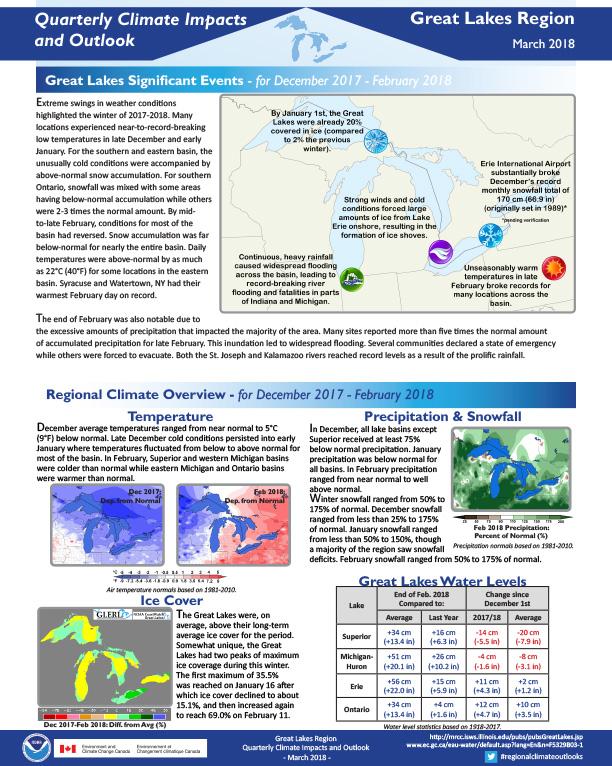Quarterly Climate Impacts and Outlook for the Great Lakes Region - March 2018
Quarterly Climate Impacts and Outlook for the Great Lakes Region for December 2017 – February 2018. Dated March 2018.
Extreme swings in weather conditions highlighted the winter of 2017-2018. Many locations experienced near-to-record-breaking low temperatures in late December and early January. For the southern and eastern basin, the unusually cold conditions were accompanied by above-normal snow accumulation. For southern Ontario, snowfall was mixed with some areas having below-normal accumulation while others were 2-3 times the normal amount. By mid-to-late February, conditions for most of the basin had reversed. Snow accumulation was far below-normal for nearly the entire basin. Daily temperatures were above-normal by as much as 22°C (40°F) for some locations in the eastern basin. Syracuse and Watertown, NY had their warmest February day on record.
NOAA’s Regional Climate Services Program created these Climate Outlooks to inform the public about recent climate impacts within their respective regions. Each regional report contains easy-to-understand language, and anyone can access them through the Drought Portal at https://www.drought.gov/drought/resources/reports.


